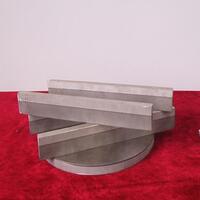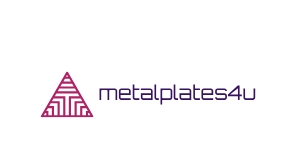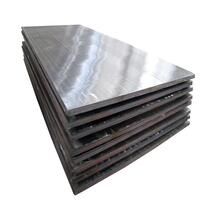1. Introduction
Just 24 hours ago, a major architecture firm in Chicago unveiled a new residential project featuring a striking corten steel facade paired with vertical standing seam metal siding—sparking renewed interest in metal clad exteriors among homeowners and builders alike. With sustainability and modern design driving trends, metal cladding is no longer just for industrial buildings.

If you’re considering a metal clad house or upgrading your current exterior, this guide will walk you through everything you need to know—from choosing the right clad metals to installing and maintaining your metal clad wall system.
2. Understanding Metal Clad: What Does It Mean?
Metal clad meaning refers to a construction method where a base material (often wood, concrete, or insulation) is covered with a layer of metal for protection, durability, or aesthetics. The term ‘clad metals’ describes composite materials like aluminum clad steel or stainless clad aluminum, where two metals are bonded for enhanced performance.
Common types include:
- Corten steel siding (weathering steel with a rust-like appearance)
- Zinc metal siding (low-maintenance, self-healing patina)
- Copper siding (elegant, ages to green patina)
- Exterior corrugated metal siding (classic industrial look)
- Colorbond standing seam or PAC Clad standing seam roof systems
3. Choosing the Right Metal Clad Type for Your Project
Not all metal cladding is created equal. Your choice depends on climate, budget, and design goals.
For example, corten siding cost is higher upfront but requires zero painting—ideal for modern metal clad houses. Zinc clad dormers offer corrosion resistance in coastal areas. Aluminum clad sheet is lightweight and great for retrofitting older structures.

Avoid confusion: ‘metal clad wire’ and ‘aluminum clad pipe insulation’ are electrical and HVAC products—unrelated to exterior cladding. Focus on architectural terms like steel facade, metal clad siding, or standing seam facade.
4. Tools and Materials You’ll Need
Before you start, gather these essentials:
- Measuring tape and chalk line
- Metal snips or shears (for metal sheet cutting)
- Drill with metal-compatible bits
- Self-tapping screws with neoprene washers
- Underlayment (e.g., house wrap or metal clad insulation)
- Flashing and trim (PAC Clad coping or column covers for clean edges)
- Safety gear: gloves, goggles, and ear protection
5. Step-by-Step Installation Guide
5.1. Prepare the Wall Surface
Ensure your substrate is flat, dry, and structurally sound. Install a moisture barrier or metal clad insulation to prevent condensation behind the cladding.

5.2. Install Furring Strips (If Needed)
For added ventilation and insulation, attach horizontal furring strips (typically 1×3 wood or metal) to create an air gap behind the metal panels.
5.3. Start at the Bottom
Begin with a level starter strip. For vertical standing seam metal siding, align the first panel plumb. For corrugated steel facade panels, overlap correctly per manufacturer specs.
5.4. Secure Panels Properly
Fasten panels using corrosion-resistant screws into the furring strips or directly into the framing. Don’t over-tighten—allow for thermal expansion.
5.5. Add Trim and Flashing
Use PAC Clad HWP trim or custom aluminum clad steel wire mesh for corners and edges. Install PAC Clad coping at roof-wall intersections to prevent water intrusion.
6. Common Problems and How to Fix Them
6.1. Oil Canning (Wavy Appearance)
Caused by improper fastening or temperature shifts. Solution: Use stiffeners or choose textured panels like aluminum diamond tread plate for rigidity.
6.2. Rust or Corrosion
Only affects non-weathering metals. Use zinc coated or stainless steel plate in humid climates. Corten steel plate naturally resists further corrosion after initial patina forms.
6.3. Noise During Rain
A common concern with metal clad roof or wall systems. Add insulation or use thicker gauge metal (e.g., 22-gauge vs. 29-gauge) to dampen sound.
7. Maintenance Tips for Longevity
Metal clad exteriors are low-maintenance but not zero-maintenance.
- Rinse annually with water to remove dirt and pollutants.
- Inspect fasteners and seals every 2–3 years.
- For copper or zinc facades, avoid harsh cleaners—they disrupt natural patina formation.
- Touch up scratches on painted systems (like Colorbond) with matching paint to prevent rust.
8. Conclusion
Whether you’re building a sleek metal clad building or refreshing a metal clad shed, choosing the right materials and installation method ensures decades of performance. From corten steel facade drama to the subtle elegance of a zinc clad roof, metal cladding blends durability with modern design. With this guide, you’re ready to tackle your project confidently—and avoid common pitfalls.
Our Website founded on October 17, 2012, is a high-tech enterprise committed to the research and development, production, processing, sales and technical services of ceramic relative materials such as How. Our products includes but not limited to Boron Carbide Ceramic Products, Boron Nitride Ceramic Products, Silicon Carbide Ceramic Products, Silicon Nitride Ceramic Products, Zirconium Dioxide Ceramic Products, etc. If you are interested, please feel free to contact us.
